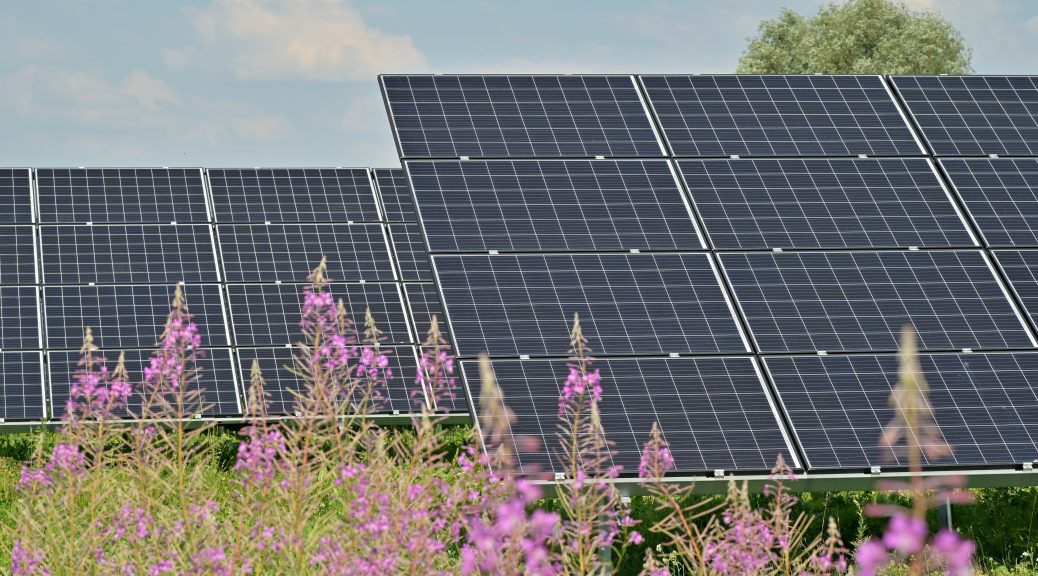
HOW DOES THE FRAUNHOFER SOLAR CELL PRINTING PROCESS WORK?
Solar cell production at a high level
In collaboration with Asys Automatisierungssysteme GmbH, Fraunhofer ISE has developed a process for metallizing silicon solar cells. With the help of this process, it is possible to produce solar cells in a high-throughput facility in a fraction of the previous time. Which benefits the largest solar module manufacturers in particular. The coating is realized using rotary screen printing and flexographic printing processes.
The line, called Rock-Star, works one and a half times faster than other lines, with throughput equivalent to up to 8000 parts per hour. Parts for other areas such as power electronics, hydrogen technology and sensor technology can also be used. The cycle time here drops to just 0.6 seconds per solar cell, which is a huge improvement in time management compared to the previous 0.9 seconds in the flatbed screen printing process.
Function of the system
The line features a completely new high-throughput transport system. When components are made, they are transported on shuttles at high speed and accuracy past printing units made by Gallus Ferd Rüesch AG, a mechanical engineering company based in Switzerland, and coated in the process.
A rotary screen printing unit and a flexographic printing unit can be added. Some printing as well as coating processes, such as gravure printing, can also be integrated due to the design. In this way, the components can be conveyed at 600 mm/s and printed accurately. Due to the metallization of the solar cells, busbars and cell grids are attached to the solar cell by screen printing.
History of the Fraunhofer Institute
The Fraunhofer Institute for Solar Energy Systems belongs to the Fraunhofer-Gesellschaft zur Förderung der angewandten Forschung e.V. and is located in Freiburg im Breisgau. It was founded in 1981 by Adolf Goetzberger. In 1983, the development of the first fully electronic ISE inverter was already successful. In 1986, the first series product with a fluorescent collector for energy supply was created here, and in 1989, the first clean room laboratory for the development of solar cells was opened. Since 1998, selective solar absorber layers for thermal solar collectors have also been produced.
In general, the institute is dedicated to applied research and development in engineering and natural sciences in the field of solar technology and photovoltaics. There is an external site in Gelsenkirchen, which produces solar cells. The institute is the largest solar research institute in Europe with over 1100 employees, and the budget is approximately 83.5 million euros.
The Frauenhofer Institute extends to 66 sites with over 22,000 employees in Germany. The Rock-Star facility was founded by Dr. Florian Clement, who is the head of the Structuring and Production Technology and Metallization department at Fraunhofer ISE, and has been its director since its inception.
History of ASYS Automatisierungssysteme GmbH
ASYS Automatisierungssysteme GmbH was founded in 1992 as a mechanical engineering company in Dornstadt by Werner Kreibl and Klaus Mang. Among other things, it produces stencil and screen printers, which are used to coat printed circuit boards with solder paste and solar cells with metallization paste. The company also produces handling systems for electronics manufacturing and automation technology for the medical technology and pharmaceutical industries. The turnover of ASYS Automatisierungs- GmbH is approximately 151 million euros per year. The company employs approximately 1300 people and covers about 75 percent of the SMT production line.
Contribution to climate protection
With the solar cells, which can now be produced much faster, climate change can be reduced at least slightly. Renewable electricity is used here instead of relying on conventional, non-renewable energy sources such as oil or gas, whose use leads to more carbon dioxide in the atmosphere than renewable electricity. Of course, accelerating the production of solar cells is only a small contribution to climate protection. However, if more and more people switch to solar cells, the effect would increase day by day. Thus, with enough participation, it could be enough to slow down or even stop man-made climate change.
Revolution in solar cell production: the Rock-Star plant
With its short production times and high production rate, the Rock-Star plant is an asset in solar cell production, accelerating the production of solar cells in Germany and worldwide. It makes a not inconsiderable contribution to sustainably stabilizing the climate with solar cells and other products and thus becomes a true asset for the world.
Photo by Andres Siimon on Unsplash